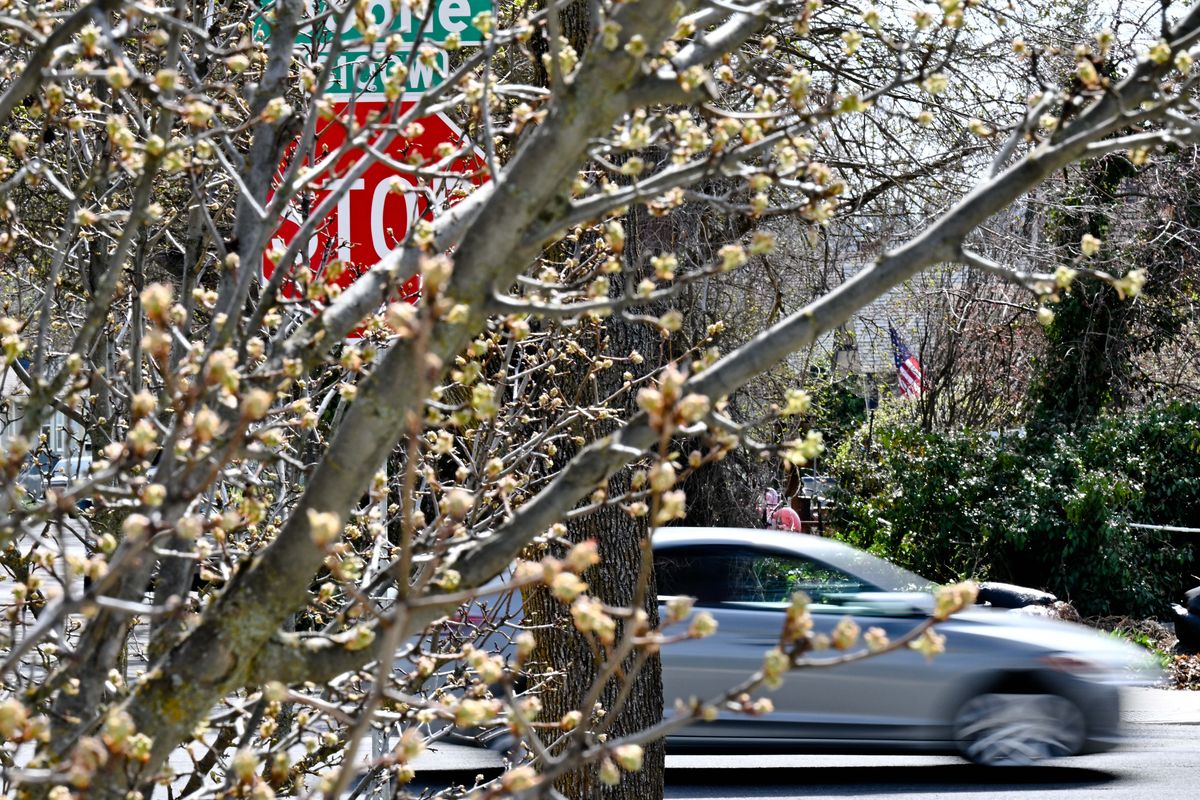Getting There: Legislation aims to balance driver visibility with Spokane’s need for trees

There’s a push to grow Spokane’s stock of trees through the rest of the decade.
The problem? City code does not give enough guidance on how to keep trees and vegetation clear of street signs and traffic signals, city officials say.
The Spokane City Council will consider voting Monday on legislation to change that. The ordinance, if approved, would establish the minimum visible distances dictating where drivers must be able to see signs and traffic signals free of any obscuring trees or vegetation.
Inga Note, a senior traffic planning engineer, told City Council members last month that Urban Forestry has encountered tree-related visibility issues in the past, such as encroaching vegetation swallowing stop signs from view or new curbside trees that grow into problems years later.
“What we want to do is provide just some clarification in the city code so that everybody is using the same distances, from Development Services to Streets to plans that are brought in by developers and Urban Forestry (so) we’re all on the same page,” Note said during a City Council committee meeting in late February.
The city’s Urban Forestry division vets complaints to the city’s 311 service line. Remedies have included sending notices to the property owner, pruning the tree, moving the sign (if possible) or removing the tree.
The proposed minimum distances vary based on the types of signage as well as speed limits. Distances, shorter for lower speed zones, are measured longitudinally along the roadway, with lines of sight drawn from the center of the nearest vehicle traffic lane to the traffic control device.
The measures use a driver’s eye height of 42 inches, the standard applied by the U.S. Department of Transportation for vegetation control and safety.
If there are trees or other vegetation impairing signage within those distances, the property owners must have them pruned, according to the bill. Tree trunks are exempt in most instances; there have been times a tree was removed because the trunk was blocking, Note said.
Property owners can prune trees up to 2 inches in diameter. A pruning service is needed beyond that, as poor cuts can lead to future issues like weakly attached branches that may present a safety risk or introduce decay, said Spokane Parks and Recreation spokesperson Fianna Dickson.
“We take an educational approach, sending courtesy notices to inform abutting property owners about the importance of pruning properly and hiring qualified City licensed professionals for tree work (for their safety and for the health of the trees),” Dickson said in an email. “The code does allow for violations, but again we take a more educational and informative approach.”
Launched around 2019 through the Urban Forestry division and The Lands Council, the SpoCanopy program is aiming for Spokane to have 40% tree cover by 2030.
“We’re hoping that this cuts down on the amount of pruning and tree removal that has to be done throughout the city,” Note said.
Work to watch for
Travelers leaving or arriving at the Spokane International Airport will see construction commence on a new 3.6 million gallon water reservoir nearby.
The $13.3 million project, which begins Monday, is not expected to impact travel.
Lacrosse Avenue between J and I streets in the Audobon-Downriver neighborhood will be completely closed Wednesday.
Summit Parkway between Monroe and Elm streets will be closed starting Monday through April 22 for Continental Contractors Inc. work.
Mission Avenue at Columbus Street near Mission Park will be limited to one lane each direction for work on the bus rapid-transit City Line project.
Freya Street between 21st and 13th avenues will be closed for asphalt repair Monday and Tuesday.
Havana Street between 6th and 7th avenues will be closed for asphalt repair Tuesday, Wednesday and Thursday.